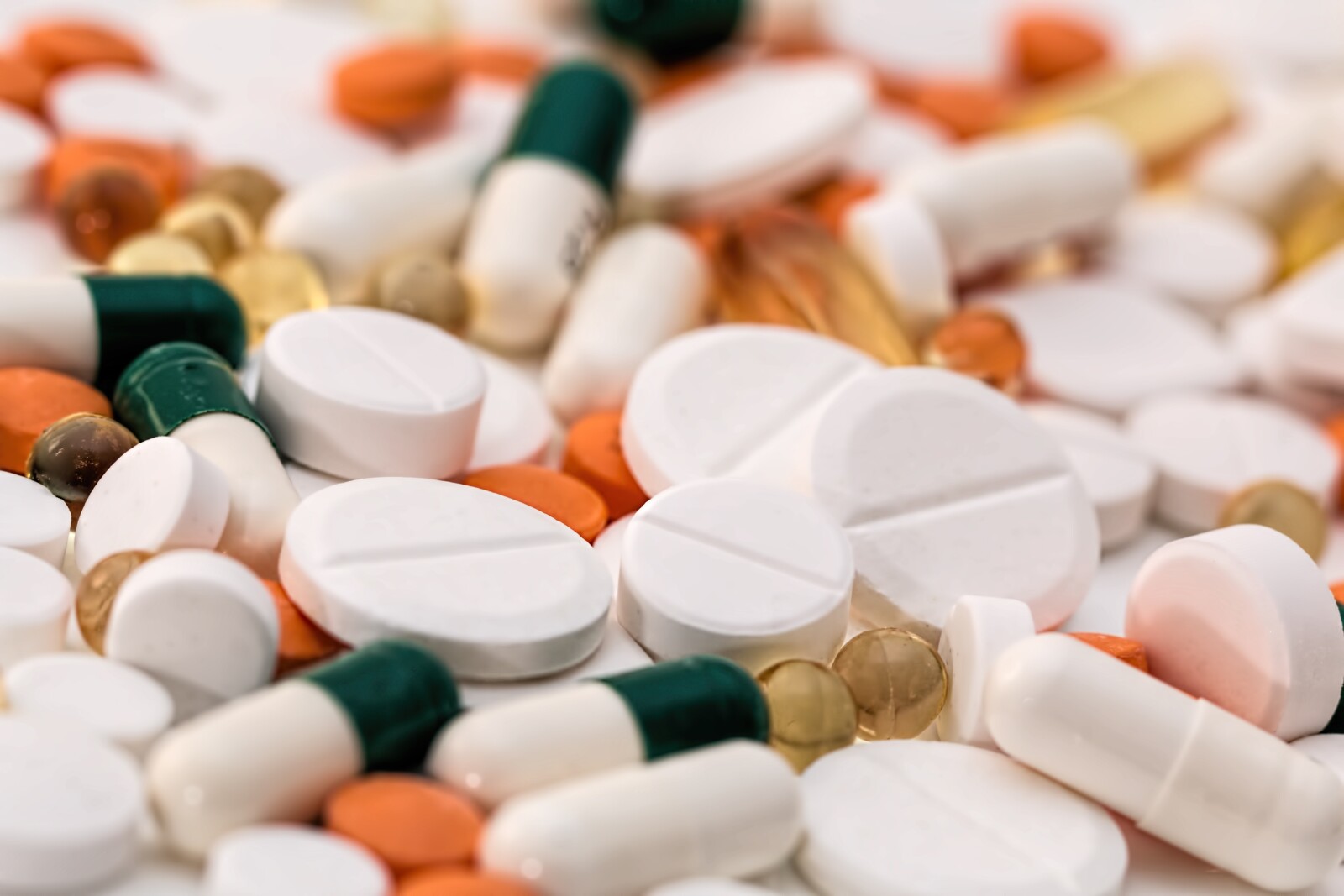SGLT2 Inhibitor Lawsuits
Within the complex tapestry of medical litigation, one thread has gained prominence - SGLT2 Inhibitor lawsuits. Primarily involving drugs like Invokana and Farxiga, these lawsuits allege that manufacturers concealed potential hazards from patients and healthcare professionals. The implicated corporations include industry giants like Johnson & Johnson and AstraZeneca. The injuries reported range from Fournier's gangrene to ketoacidosis. This article provides an in-depth analysis of the ongoing SGLT2 Inhibitor lawsuits and their potential implications.

Key Takeaways
- SGLT2 inhibitors, such as Invokana and Farxiga, have been the subject of lawsuits due to alleged concealment of dangers by manufacturers.
- Lawsuits against pharmaceutical companies, including Janssen Pharmaceuticals, Bristol-Myers Squibb, and Eli Lilly, have been filed for lack of warning labels on the drugs.
- Specific injuries and conditions cited in the lawsuits include Fourniers gangrene, scrotum removal, diabetic ketoacidosis, and dehydration.
- Judges have ruled in favor of adding warnings to drug labels, allowing the cases to proceed despite defendants' attempts to dismiss them.
Understanding SGLT2 Inhibitors
A significant number of SGLT2 inhibitors, including Invokana, Invokamet, Farxiga, and Jardiance, are marketed by various manufacturers such as Johnson & Johnson, Bristol-Myers Squibb, and Eli Lilly. Understanding the mechanism of action of SGLT2 inhibitors is vital in appreciating their role in managing diabetes. These drugs work by inhibiting the sodium-glucose co-transporter-2 (SGLT2) protein in the kidneys, reducing glucose reabsorption and promoting its excretion. However, exploring the potential long-term effects of SGLT2 inhibitors is equally important. Studies suggest an increased risk of serious complications such as kidney damage, cardiovascular events, and ketoacidosis. Though these drugs offer significant benefits in blood glucose control, it is essential to weigh these against potential long-term effects.
Identifying the Manufacturers of SGLT2 Inhibitors
The manufacturers of SGLT2 inhibitors are global pharmaceutical giants, including but not limited to Johnson & Johnson, Bristol-Myers Squibb, and Eli Lilly. These manufacturers are currently facing lawsuits due to the alleged harmful effects of their SGLT2 inhibitors. Pending lawsuits and potential settlements could have a significant impact on the drug sales of these companies. Despite the potential financial implications, these pharmaceutical companies continue to stand by the safety and efficacy of their products. However, the outcome of the ongoing litigation could lead to a considerable shift in the market dynamics. The companies might have to bear hefty settlements that could not only dent their profits but also affect their reputation in the global pharmaceutical industry.
The Role of SGLT2 Inhibitors in Diabetes Management
Within the scope of diabetes management, SGLT2 inhibitors play a crucial role by controlling high blood sugar levels in adults with type 2 diabetes. Their efficacy and safety have been established in numerous clinical trials, which show their ability to lower HbA1c, a marker of long-term blood sugar control. However, they are not without risks, and this has led to litigation against their manufacturers. A comparative analysis of SGLT2 inhibitors with other diabetes medications reveals a unique mechanism of action that offers added benefits, such as weight loss and blood pressure reduction. However, these advantages must be weighed against the potential for serious adverse effects, including the risk of diabetic ketoacidosis, a severe condition that can lead to hospitalization or even death.
Overview of SGLT2 Inhibitor Lawsuits
Given the increasing number of cases, it is crucial to understand that SGLT2 inhibitor lawsuits primarily stem from allegations that pharmaceutical companies failed to adequately warn patients and healthcare providers about the potential risks and side effects associated with these drugs. The impact on patient advocacy is profound, as these lawsuits highlight the need for transparency and full disclosure in the pharmaceutical industry. Legal experts play a pivotal role in these cases, providing the necessary guidance and representation to affected patients. They interpret complex medical data and legal jargon, making it understandable for the layperson. By doing so, they not only help secure justice for the aggrieved but also contribute to raising standards in drug safety and patient care.
The Basis for SGLT2 Inhibitor Lawsuits
Patients initiated SGLT2 inhibitor lawsuits, alleging that pharmaceutical companies concealed the potential risks of these drugs and failed to provide adequate warnings, thereby causing them serious harm. The lawsuits claim that these companies were aware of the potential damages that could be inflicted by the drugs, including kidney damage and ketoacidosis, but did not adequately inform doctors and patients.
The plaintiffs, seeking compensation for their suffering and losses, have sought legal representation in their fight against the pharmaceutical giants. The attorneys argue that the pharmaceutical companies have a duty of care to consumers, which they violated by hiding the potentially serious side effects of the SGLT2 inhibitors. This forms the basis for the ongoing SGLT2 inhibitor lawsuits.
The Course of SGLT2 Inhibitor Litigation to Date
Since the first SGLT2 inhibitor lawsuit was filed, the litigation process has undergone significant developments, with numerous cases consolidated into multidistrict litigation (MDL) for more efficient proceedings. The progress of SGLT2 inhibitor litigation has shown a trend of courts favoring patients, as they allow cases to proceed despite manufacturers' attempts at dismissal. These lawsuits have had a significant impact on patients, not only providing a potential avenue for financial restitution but also highlighting the need for transparency in drug safety information. As litigation continues, the future of SGLT2 inhibitor lawsuits seems promising for affected patients. However, potential outcomes for manufacturers are less certain, with potential financial and reputational risks looming. Regardless, these proceedings have underscored the importance of patient safety in the pharmaceutical industry.
Key Cases in the SGLT2 Inhibitor Lawsuits
Over the course of the ongoing SGLT2 inhibitor litigation, several key cases have emerged that serve to illustrate both the core allegations and the potential legal repercussions faced by the manufacturers. Central to these cases is the claim that manufacturers knowingly concealed potential dangers of these drugs, leading to serious health complications. The progress of litigation in these cases has been marked by numerous legal challenges, with manufacturers attempting to dismiss lawsuits, to varying degrees of success. The impact on patient safety has been significant, with cases citing conditions such as Fournier's gangrene and diabetic ketoacidosis. These lawsuits underscore the urgent need for greater transparency and accountability in the pharmaceutical industry to ensure patient safety.
The Accusations Against Pharmaceutical Companies
Allegations against manufacturers of SGLT2 inhibitors, such as Johnson & Johnson, Janssen Pharmaceuticals, Bristol-Myers Squibb, AstraZeneca, Boehringer Ingelheim, and Eli Lilly, have centered around their alleged knowledge and concealment of the potential dangers of these drugs. These accusations have undoubtedly influenced public perception, casting a shadow on the reputation of these pharmaceutical giants. A common thread in the defendants' defense strategies has been the assertion that the benefits of their drugs outweigh the potential risks, arguing that all medications carry some degree of risk. However, critics argue that the companies failed to adequately communicate these risks to physicians and patients alike. It remains to be seen how these lawsuits will reshape public trust and corporate responsibility within the pharmaceutical industry.
The Impact of SGLT2 Inhibitor Lawsuits on Manufacturers
The wave of SGLT2 inhibitor lawsuits has significantly impacted the financial stability, corporate image, and market position of pharmaceutical manufacturers such as Johnson & Johnson, Janssen Pharmaceuticals, Bristol-Myers Squibb, AstraZeneca, Boehringer Ingelheim, and Eli Lilly. The impact on the drug industry has been profound, with substantial financial losses due to settlements, increased scrutiny from regulatory bodies, and a decline in investor trust. The lawsuits have also led to considerable patient compensation, awarding those who suffered severe side effects from these medications. This situation has necessitated changes in the industry, including improved transparency, stringent testing procedures, and enhanced patient safety measures. However, the reputational damage and financial implications of these lawsuits continue to pose significant challenges for these manufacturers.
Insights From SGLT2 Inhibitor Lawsuit Verdicts
During the course of numerous SGLT2 inhibitor lawsuits, a variety of insightful conclusions have been drawn from the verdicts that carry significant implications for both patients and pharmaceutical companies. These verdicts have provided lessons learned from recent SGLT2 inhibitor lawsuit verdicts, painting a clearer picture of the potential long term effects of SGLT2 inhibitor use on patients. The legal outcomes have shed light on the severity of side effects and the role of manufacturers in insufficiently warning about these risks. Furthermore, the verdicts highlight a growing need for more transparent communication in the pharmaceutical industry. In essence, these lawsuits are not only a call for justice for the victims, but a call for change in industry practices to safeguard future patients.
Typical Injuries and Conditions in SGLT2 Inhibitor Lawsuits
In examining the SGLT2 inhibitor lawsuits, a pattern of common injuries and conditions has started to emerge, providing insight into the serious health risks associated with these drugs. The prevalence of SGLT2 inhibitor lawsuits underscores the widespread impact of these medications. Typical injuries reported in these lawsuits include ketoacidosis, kidney injuries, and a rare but severe infection called Fournier's gangrene. Long-term effects of SGLT2 inhibitors can be devastating, often leading to hospitalization and sometimes even death. These conditions are often life-altering, with victims suffering from physical pain, emotional distress, and financial burdens due to medical expenses. These lawsuits serve as a grim reminder of the potential risks associated with SGLT2 inhibitors, sparking widespread concern over their safety.
The Role of FDA Warnings in SGLT2 Inhibitor Lawsuits
While SGLT2 inhibitor lawsuits often focus on manufacturer negligence, it is important to consider the role of FDA warnings in these legal battles, as they can significantly impact the course and outcome of a case. FDA warnings are typically issued when a drug is found to have severe side effects, thereby ensuring patient safety. They can serve as crucial evidence in lawsuits, indicating that manufacturers may have failed to adequately warn patients and healthcare providers about potential risks. Furthermore, healthcare providers play a pivotal role in these lawsuits. If they fail to heed FDA warnings and continue to prescribe these drugs without proper patient education, they may also be held liable for any harm caused.
What to Expect in Future SGLT2 Inhibitor Lawsuits
As we look ahead, we can anticipate a continued rise in SGLT2 inhibitor lawsuits, and the evolving legal landscape will undoubtedly bring new challenges and developments in these cases. Future trends suggest an increasing number of cases as more patients become aware of potential harmful effects of these drugs. This awareness may lead to larger, more complex cases that require a thorough understanding of the drug's impact on patients. The nature of these cases may also lead to potential settlements, as pharmaceutical companies might prefer to avoid prolonged court battles. However, the details and amounts of these settlements would largely depend on the specifics of each case. As such, patients and their legal teams must stay vigilant and informed.
Legal Recourse for SGLT2 Inhibitor Patients
How can patients who have suffered adverse effects from SGLT2 inhibitors seek legal recourse, and what legal options are available to them? Patients affected by SGLT2 inhibitors can hire a lawyer to represent them in a lawsuit against the drug manufacturers. This legal representation can guide them through the complex litigation process. If successful, these lawsuits can result in potential compensation for medical bills, lost wages, and pain and suffering. It's crucial to note that each case is unique, and the outcomes can vary widely. Legal recourse is not guaranteed, but it provides an avenue for patients to seek justice and potentially receive compensation for the harm that they have endured due to the use of SGLT2 inhibitors.
How SGLT2 Inhibitor Lawsuits Affect Patients and the Medical Community
Numerous SGLT2 inhibitor lawsuits have undeniably influenced both the lives of individual patients and the broader medical community, altering perceptions of drug safety and prompting a reevaluation of prescribing practices. On one hand, these lawsuits have led to significant patient compensation, providing financial relief for medical expenses, lost wages, and pain suffered. On the other, they have provoked a strong medical community response. Physicians are now more cautious when prescribing SGLT2 inhibitors, considering potential risks alongside potential benefits. Moreover, this litigation has highlighted the importance of transparency and thorough testing in pharmaceutical companies. Ultimately, the repercussions of these lawsuits extend beyond individual compensation, fostering a culture of accountability and diligence in the medical field.
Frequently Asked Questions
What Are the Potential Side Effects of Other Diabetes Medications That Are Not SGLT2 Inhibitors?
Other diabetes medications that are not SGLT2 inhibitors, such as insulin, metformin, and sulfonylureas, also carry potential side effects. These can include hypoglycemia, weight gain, gastrointestinal discomfort, and kidney complications. Medication alternatives should be considered in consultation with a healthcare professional, who can provide guidance on side effects management. This can include careful monitoring of blood glucose levels and adjusting dosing as necessary to mitigate potential adverse effects.
How Do SGLT2 Inhibitors Compare to Other Diabetes Treatment Options in Terms of Effectiveness?
In the panorama of diabetes management, SGLT2 inhibitors and their alternatives each hold distinct advantages. SGLT2 inhibitors, such as Invokana, effectively lower blood sugar by causing the kidneys to remove sugar from the body through urine. Inhibitor alternatives like metformin or insulin, on the other hand, have a longer track record and are generally cheaper. The choice between SGLT2 inhibitors and other treatments should be individualized based on patient characteristics and preferences, as well as drug efficacy and safety profiles.
Are There Any Preventative Measures That Patients Can Take to Avoid the Harmful Side Effects Associated With SGLT2 Inhibitors?
Patients can take several preventative measures to avoid harmful side effects associated with SGLT2 inhibitors. First, they should have regular consultations with their healthcare providers to monitor their health status. Second, they should be aware of the risks associated with these drugs. Finally, exploring alternative medications is also advisable, as other diabetes treatment options may offer similar effectiveness with potentially fewer side effects. Always discuss any changes in medication with a healthcare professional.
What Is the Process for Filing a Lawsuit if You Believe You Have Been Harmed by an SGLT2 Inhibitor?
If one believes they have been harmed due to a certain medication, navigating the legal maze can seem daunting. Firstly, lawsuit eligibility needs to be ascertained. This involves confirming if the injuries suffered can be legally attributed to the medication. If eligibility is confirmed, the next step is securing legal representation. A competent attorney with experience in medical lawsuits is essential. They guide the client through the intricacies of filing the lawsuit, effectively representing their grievances in court.
How Has the Medical Community Responded to the Lawsuits Surrounding SGLT2 Inhibitors?
The medical community's response to the lawsuits implicating SGLT2 inhibitors has been one of increased scrutiny and calls for stricter oversight. These lawsuit implications have highlighted the need for greater medical accountability. Physicians are now more cautious in prescribing these drugs, demanding more transparency from drug manufacturers. There's a growing insistence on rigorous clinical trials and comprehensive post-marketing surveillance to monitor adverse drug reactions, ensuring patient safety remains paramount.
Conclusion
The SGLT2 Inhibitor lawsuits underscore the crucial role of transparency in pharmaceutical manufacturing and marketing. They highlight the need for constant vigilance against potential adverse drug effects. As the legal battles unfold, it is hoped that they will catalyze reforms in drug safety regulations, ensuring patient welfare is prioritized over corporate profits. This legal maelstrom serves as a stark reminder of the Hippocratic Oath's anachronistic yet vital command: primum non nocere, "first, do no harm".

This post has been generated by AI and was not reviewed by editors. This is Not legal advice. Please consult with an attorney.




